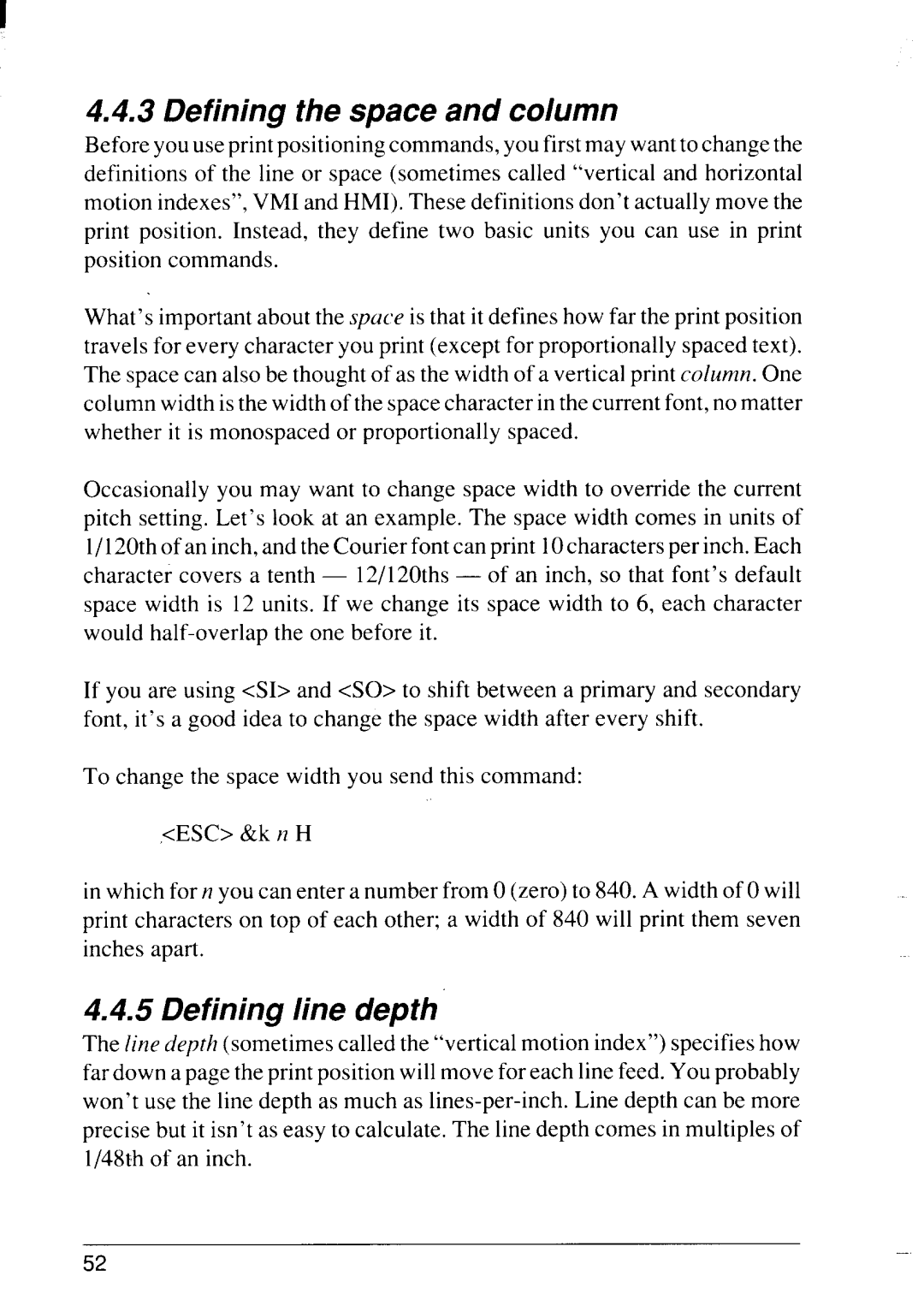
I
4.4.3 Defining the space and column
Before you use print positioning commands, you first may want to change the definitions of the line or space (sometimes called “vertical and horizontal motion indexes”, VMI and HMI). These definitions don’t actually move the print position. Instead, they define two basic units you can use in print position commands.
What’s important about the space is that it defines how far the print position travels for every character you print (except for proportionally spaced text). The space can also be thought of as the width of a vertical print column. One column width is the width of the space character in the current font, no matter whether it is monospaced or proportionally spaced.
Occasionally you may want to change space width to override the current pitch setting. Let’s look at an example. The space width comes in units of l/120th of an inch, and the Courier font can print 10characters per inch. Each character covers a tenth — 12/120ths — of an inch, so that font’s default space width is 12 units. If we change its space width to 6, each character would
If you are using <S1> and <SO> to shift between a primary and secondary font, it’s a good idea to change the space width after every shift.
To change the space width you send this command:
,<ESC> &k n H
in which for n you can enter a number from O(zero) to 840. A width of Owill print characters on top of each other; a width of 840 will print them seven inches apart.
4.4.5Defining line depth
The line dep[h (sometimes called the “vertical motion index”) specifies how far down a page the print position will move for each line feed. You probably won’t use the line depth as much as
52
